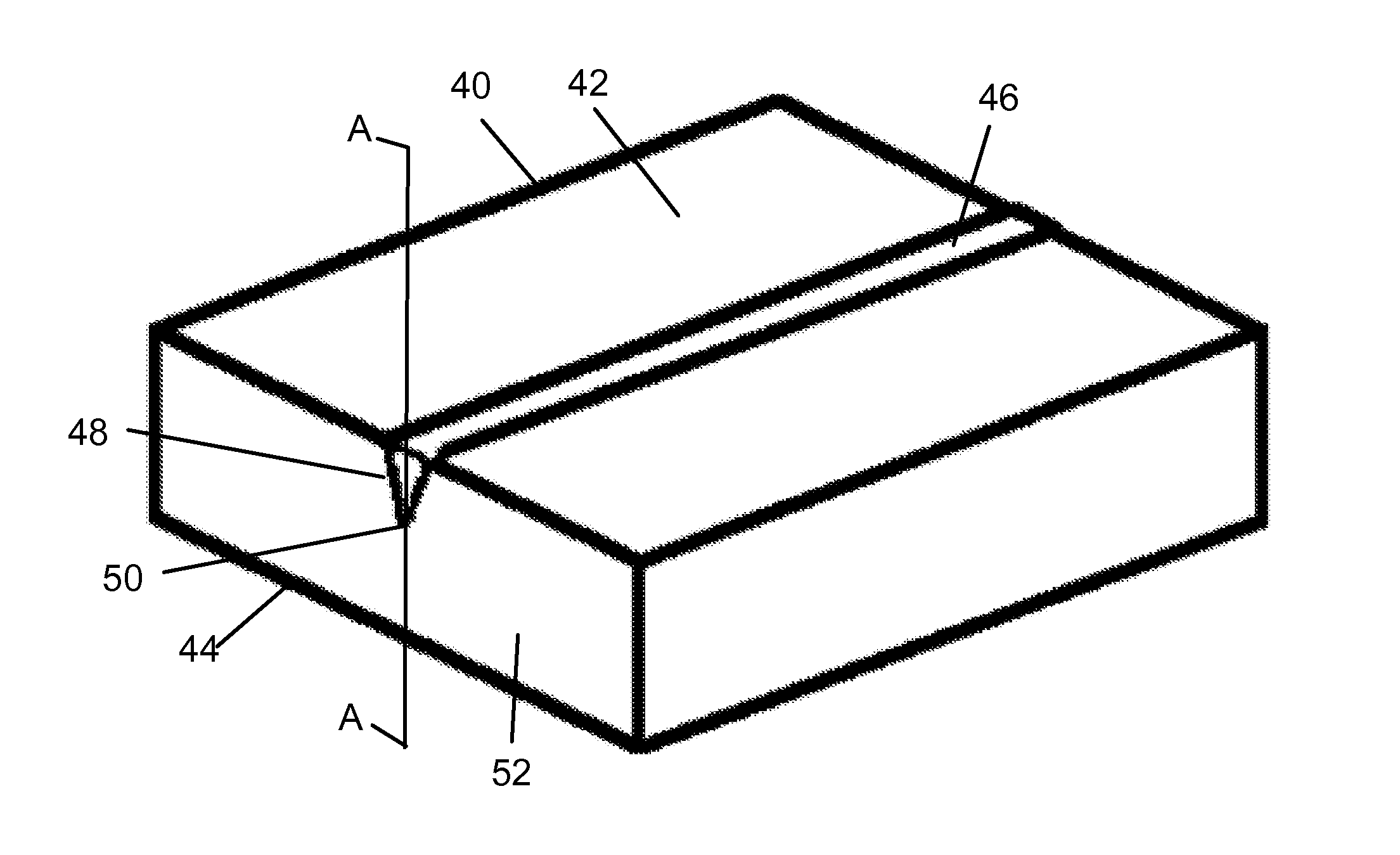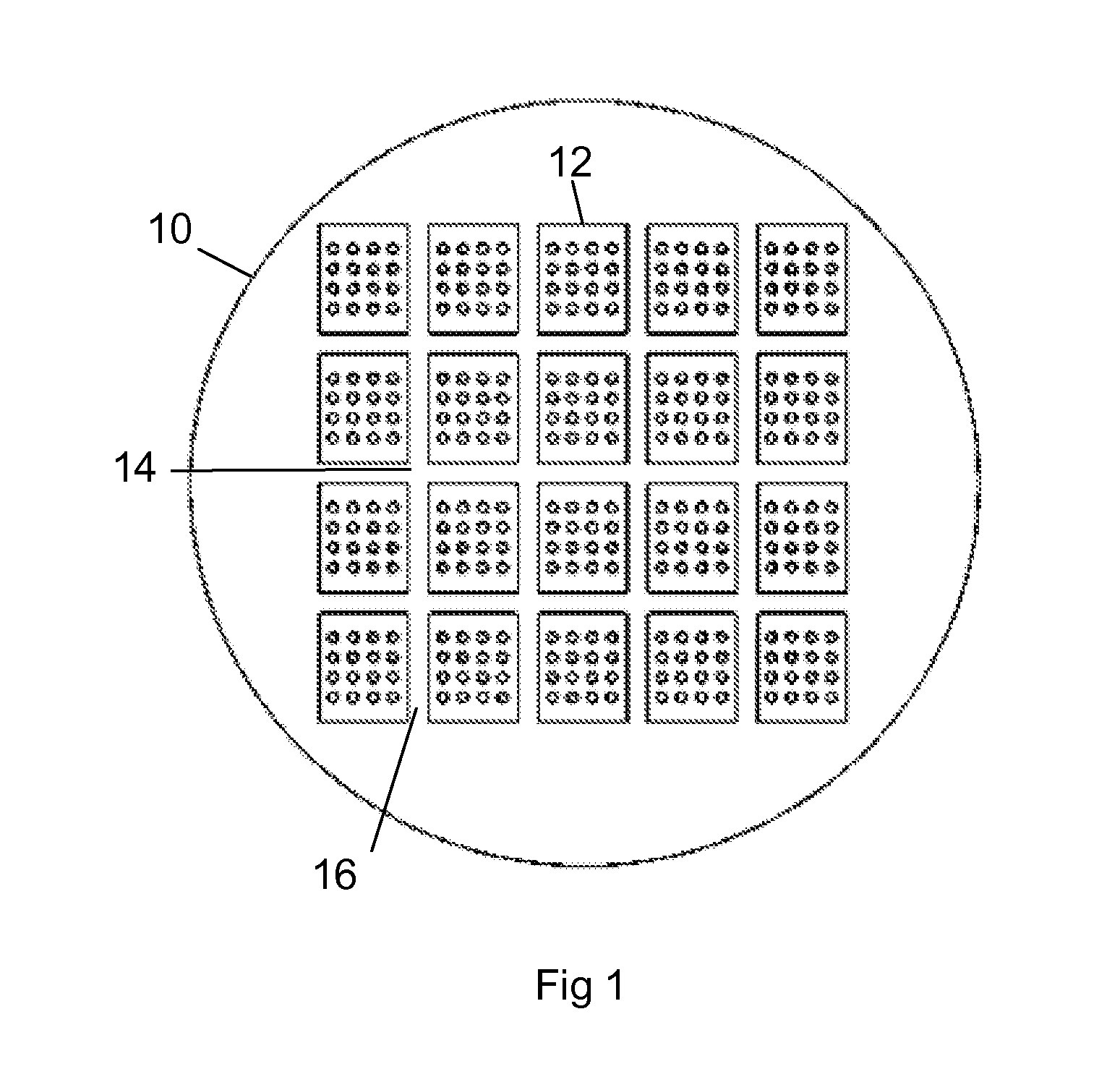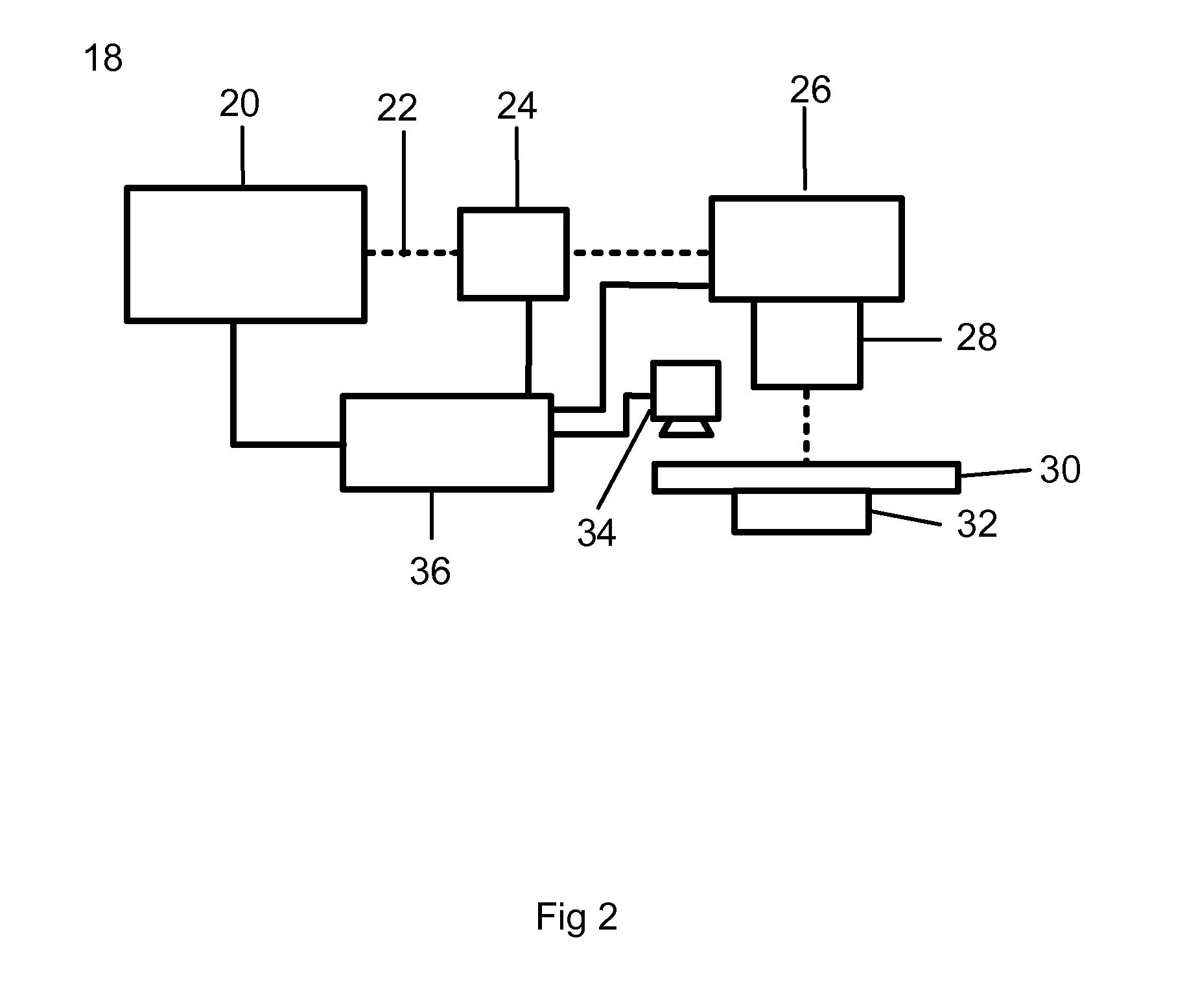Method and apparatus for improved singulation of light emitting devices
a technology of light emitting devices and singulation methods, applied in laser beam welding apparatus, manufacturing tools, welding/soldering/cutting articles, etc., can solve the problems of reducing light output, reducing light output, and diminishing light output, so as to reduce the amount of thermal debris, improve light output, and control the effect of heat damage to the substra
- Summary
- Abstract
- Description
- Claims
- Application Information
AI Technical Summary
Benefits of technology
Problems solved by technology
Method used
Image
Examples
Embodiment Construction
[0017]Aspects of this invention perform laser assisted singulation of light emitting electronic devices manufactured on a substrate with a laser processing system. The laser processing system uses a pulsed picosecond laser having controllable laser parameters to form a modified region on the surface of the substrate which extends into the interior of the substrate, the laser parameters being controlled to limit the extent of the modified region laterally. The substrate is then singulated by applying mechanical stress to the substrate proximate to the modified region thereby cleaving the substrate along facets which include the modified regions. These facets which include modified materials improve the light output from the light emitting device by providing a highly transmissive, diffuse, non-specular sidewall surface which improves the transmission of light from the interior of the device to the outside. Light which is reflected back into the device is undesirable first because it ...
PUM
| Property | Measurement | Unit |
|---|---|---|
| wavelength | aaaaa | aaaaa |
| focal spot size | aaaaa | aaaaa |
| focal spot speed | aaaaa | aaaaa |
Abstract
Description
Claims
Application Information
 Login to View More
Login to View More - R&D
- Intellectual Property
- Life Sciences
- Materials
- Tech Scout
- Unparalleled Data Quality
- Higher Quality Content
- 60% Fewer Hallucinations
Browse by: Latest US Patents, China's latest patents, Technical Efficacy Thesaurus, Application Domain, Technology Topic, Popular Technical Reports.
© 2025 PatSnap. All rights reserved.Legal|Privacy policy|Modern Slavery Act Transparency Statement|Sitemap|About US| Contact US: help@patsnap.com



